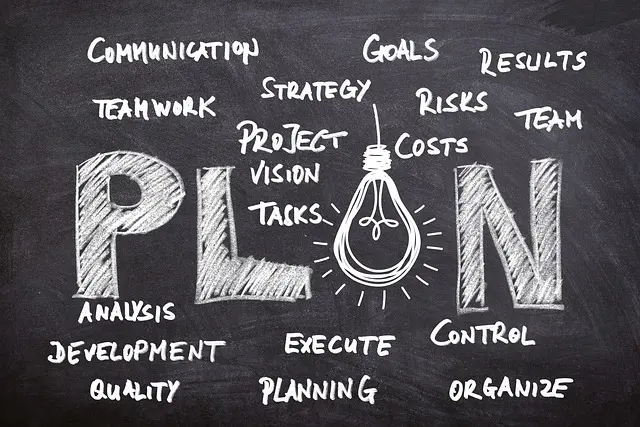
Understanding the essay prompt
Understanding the essay prompt is crucial for writing a successful paper. Before diving into research and brainstorming, it is important to carefully analyze the instructions provided. Keywords such as “analyze,” “compare,” or “evaluate” indicate specific tasks that need to be addressed in the essay.
Once you have identified these keywords, it is essential to break down their meanings and consider how they relate to your topic. This will help you develop a clear understanding of what is expected from your essay. Additionally, pay attention to any specific guidelines regarding formatting or citation styles.
After comprehending the requirements, start brainstorming ideas and creating an outline for your paper. This step allows you to organize your thoughts and determine the structure of your essay. Consider different angles or perspectives that can be explored within the given parameters.
Conducting efficient research comes next in order to gather relevant information and evidence supporting your argument. Utilize academic databases, books, articles, or credible online sources related to your topic. Take notes while researching so that you can easily refer back to key points during the writing process.
By following these steps – understanding the prompt thoroughly, brainstorming effectively, conducting efficient research – you will be well on your way towards crafting a strong thesis statement for your essay without relying on conjunctive adverbs connecting sentences together.
Brainstorming ideas and creating an outline
When faced with an essay prompt, it is crucial to fully understand its requirements and expectations. This involves carefully reading and analyzing the prompt, paying attention to keywords such as “analyze,” “compare,” or “evaluate.” By identifying these key words, one can determine the specific focus of the essay and brainstorm ideas accordingly. Additionally, considering any given instructions or limitations will help in creating a clear direction for the essay.
Once the prompt has been thoroughly understood, it is time to start brainstorming ideas. This process involves generating a wide range of thoughts and concepts related to the topic at hand. It can be helpful to use techniques such as free writing or mind mapping to explore different angles or perspectives on the subject matter. The goal here is not to filter ideas but rather to generate as many possibilities as possible.
After brainstorming ideas, it is essential to organize them into a coherent outline that provides structure for the essay. The outline serves as a roadmap for developing arguments and supporting evidence throughout the paper. It should include main points that align with each paragraph’s topic sentence while also ensuring logical flow between paragraphs. Creating an outline helps writers stay focused on their main arguments while preventing them from getting lost in tangents or unrelated information.
Conducting efficient research
Research is a crucial step in the essay writing process as it provides the necessary information and evidence to support your arguments. To conduct efficient research, it is essential to start by identifying relevant keywords related to your topic. These keywords will help you narrow down your search and find reliable sources that are directly related to your subject matter. Additionally, utilizing advanced search techniques such as Boolean operators can further refine your results and save time.
Once you have identified the appropriate keywords, it is important to utilize various resources for conducting research. Online databases, scholarly journals, books, and reputable websites can all provide valuable information on different aspects of your topic. It is also beneficial to explore both primary and secondary sources as they offer different perspectives and levels of analysis. Taking notes while researching will help you keep track of key findings and ideas that can be integrated into your essay later on.
As you gather information from various sources, it is crucial to critically evaluate the credibility and reliability of each source before incorporating them into your essay. Look for authoritative authors or organizations with expertise in the field, check for citations or references within the source itself, and consider whether there may be any potential biases present. By analyzing multiple sources with a critical eye, you ensure that only accurate and trustworthy information makes its way into your final essay.
Developing a strong thesis statement
A strong thesis statement is essential in any essay as it provides a clear and concise focus for the entire piece. It serves as a roadmap for both the writer and the reader, guiding them through the main argument of the essay. To develop a strong thesis statement, one must first understand the essay prompt and identify key keywords or concepts.
Once these keywords are identified, brainstorming ideas and creating an outline can help organize thoughts and ensure that all relevant points are addressed. This process allows for a logical flow of ideas and helps to avoid tangents or irrelevant information.
Conducting efficient research is another crucial step in developing a strong thesis statement. By gathering evidence from credible sources, writers can support their claims with facts and examples that enhance their arguments. Incorporating this evidence effectively strengthens the overall thesis statement by providing solid backing.
Crafting a compelling introduction sets up the foundation for an effective thesis statement. It should grab readers’ attention while clearly stating what will be discussed in the essay. The introduction should also provide context and background information to establish credibility.
Structuring body paragraphs effectively ensures that each point supports the main argument presented in the thesis statement. Each paragraph should have a clear topic sentence that relates back to the overall argument while incorporating relevant evidence and examples to strengthen its validity.
Analyzing and evaluating arguments throughout an essay demonstrates critical thinking skills while adding depth to one’s own perspective. By considering opposing viewpoints or counterarguments, writers can address potential weaknesses in their arguments, making them more convincing overall.
Writing clear and concise sentences is crucial when developing a strong thesis statement as it enhances readability and comprehension. Avoiding unnecessary jargon or complex language helps ensure that readers fully grasp your message without confusion or ambiguity.
Lastly, editing and proofreading for clarity and coherence is essential before submitting any written work. This final step allows you to catch any grammatical errors or inconsistencies that may distract from your overall message.
Crafting a compelling introduction
An effective introduction plays a crucial role in capturing the reader’s attention and setting the tone for the entire essay. It is important to start with a strong hook that grabs the reader’s interest right from the beginning. This can be achieved by posing a thought-provoking question or sharing an intriguing anecdote related to the topic. By doing so, readers are more likely to continue reading and engage with your essay.
In addition to grabbing attention, crafting a compelling introduction involves providing necessary background information on the topic. This helps establish context and ensures that readers have a clear understanding of what will be discussed in the essay. Including relevant keywords or terms related to the subject matter can also help demonstrate your knowledge and expertise on the topic.
Furthermore, an effective introduction should end with a strong thesis statement that clearly states your main argument or position on the topic. This thesis statement acts as a roadmap for your essay, guiding both you as the writer and your readers throughout the rest of your writing. A well-crafted thesis statement not only provides focus but also sets up expectations for what will be explored in subsequent paragraphs.
Structuring body paragraphs effectively
To structure body paragraphs effectively, it is essential to have a clear and logical organization. Start each paragraph with a topic sentence that introduces the main idea or argument. This helps guide the reader and provides a framework for the rest of the paragraph. Additionally, use transitional words and phrases such as “furthermore,” “in addition,” or “on the other hand” to smoothly transition between ideas within each paragraph.
Another important aspect of structuring body paragraphs effectively is providing sufficient evidence and examples to support your claims. Use specific details, facts, statistics, or expert opinions to back up your arguments. This not only strengthens your points but also adds credibility to your writing. Remember to explain how each piece of evidence relates back to your main thesis statement.
Lastly, ensure coherence in your body paragraphs by maintaining a consistent focus on one central idea per paragraph. Avoid introducing unrelated information or going off on tangents that may confuse readers. Each paragraph should contribute directly to developing and supporting your overall argument throughout the essay.
By following these guidelines for structuring body paragraphs effectively – starting with a strong topic sentence, providing ample evidence and examples, and maintaining coherence – you can create well-organized and persuasive essays that engage readers from start to finish without relying on summary phrases like ‘In conclusion’ or ‘Finally.’
Incorporating relevant evidence and examples
In order to strengthen your argument and provide support for your claims, it is crucial to incorporate relevant evidence and examples. This can be done by citing credible sources, such as scholarly articles or expert opinions, that are directly related to the topic at hand. By including this evidence, you not only demonstrate a deep understanding of the subject matter but also enhance the credibility of your own analysis. For instance, if you are writing an essay about the impact of climate change on biodiversity, you could cite scientific studies that highlight specific species affected by rising temperatures.
Furthermore, incorporating examples can help illustrate abstract concepts or complex ideas in a more tangible way. By providing concrete instances or case studies, readers can better grasp the relevance and implications of your arguments. For example, if you are discussing the importance of education in reducing poverty rates, sharing real-life success stories of individuals who have overcome socioeconomic barriers through education can make your point more compelling.
Additionally, incorporating evidence and examples allows for a more thorough analysis and evaluation of opposing viewpoints. By presenting counterarguments supported by solid evidence from reputable sources or historical events, you demonstrate a balanced approach to the topic while strengthening your own position. This shows readers that you have considered alternative perspectives before arriving at your conclusion. It is important to note that when using evidence from opposing viewpoints it should be presented objectively without bias.
By skillfully incorporating relevant evidence and examples throughout your essay without relying on conjunctive adverbs or summary phrases in concluding paragraphs,you will effectively support your thesis statement and engage readers with well-supported arguments.
Analyzing and evaluating arguments
When analyzing and evaluating arguments, it is crucial to consider the validity of the evidence presented. This requires examining the sources used and assessing their credibility. By scrutinizing the qualifications and expertise of authors or researchers, one can determine whether they possess sufficient knowledge on the subject matter. Additionally, cross-referencing information with other reputable sources helps to establish its reliability. Evaluating arguments based on strong evidence enhances their persuasiveness and strengthens the overall argument.
Another important aspect in analyzing and evaluating arguments is identifying logical fallacies. These are errors in reasoning that undermine the credibility of an argument. Common fallacies include ad hominem attacks, which involve attacking a person’s character instead of addressing their argument directly; straw man fallacy, where a distorted version of an opponent’s argument is attacked; or false cause fallacy, which assumes causation without supporting evidence. Recognizing these fallacies allows for a more critical evaluation of an argument’s soundness.
In addition to assessing evidence and identifying logical fallacies, it is essential to evaluate counterarguments thoroughly when analyzing and evaluating arguments. Considering opposing viewpoints provides a comprehensive understanding of the topic at hand and strengthens one’s own position by addressing potential weaknesses or objections raised by others. By acknowledging counterarguments honestly and effectively refuting them with well-supported evidence, writers can demonstrate their ability to engage in thoughtful analysis while presenting a compelling case for their own stance.
Writing clear and concise sentences
Writing clear and concise sentences is essential in effective communication. Clarity ensures that the intended message is easily understood by the reader, while conciseness helps to eliminate any unnecessary information or wordiness. By using precise language and avoiding excessive details, writers can convey their ideas more efficiently. This not only enhances readability but also demonstrates a strong command of language and critical thinking skills.
In order to achieve clarity and conciseness in writing, it is important to focus on sentence structure. Sentences should be constructed with a subject, verb, and object whenever possible, as this provides a clear flow of thought. Additionally, eliminating redundant words or phrases can help streamline the sentence without sacrificing meaning. It is also crucial to use appropriate punctuation marks such as commas and periods to indicate pauses or breaks in thoughts.
Furthermore, maintaining consistency in tone throughout the writing contributes to clarity and conciseness. A default tone allows for a neutral perspective that appeals to a wider audience. Avoiding overly complex vocabulary or jargon also helps ensure that readers from various backgrounds can comprehend the content easily. By adhering to these principles of clear and concise writing, authors can effectively convey their ideas while engaging readers with well-structured sentences.
Editing and proofreading for clarity and coherence
Editing and proofreading are essential steps in the writing process to ensure clarity and coherence. After completing a draft, it is important to carefully review the content for any grammatical errors, spelling mistakes, or awkward sentence structures. By meticulously examining each sentence, writers can enhance the overall quality of their work.
During the editing phase, attention should be given to ensuring that ideas flow smoothly from one paragraph to another. This can be achieved by using transitional phrases or words such as “however,” “in addition,” or “on the other hand.” These connectors help readers follow along with the writer’s thought process and maintain a logical progression throughout the essay.
Proofreading focuses on checking for consistency in style and tone. It involves reviewing word choices, verb tenses, punctuation usage, and formatting conventions. By adhering to these guidelines consistently throughout an essay, writers can create a coherent piece that effectively communicates their intended message without distractions caused by inconsistencies.












